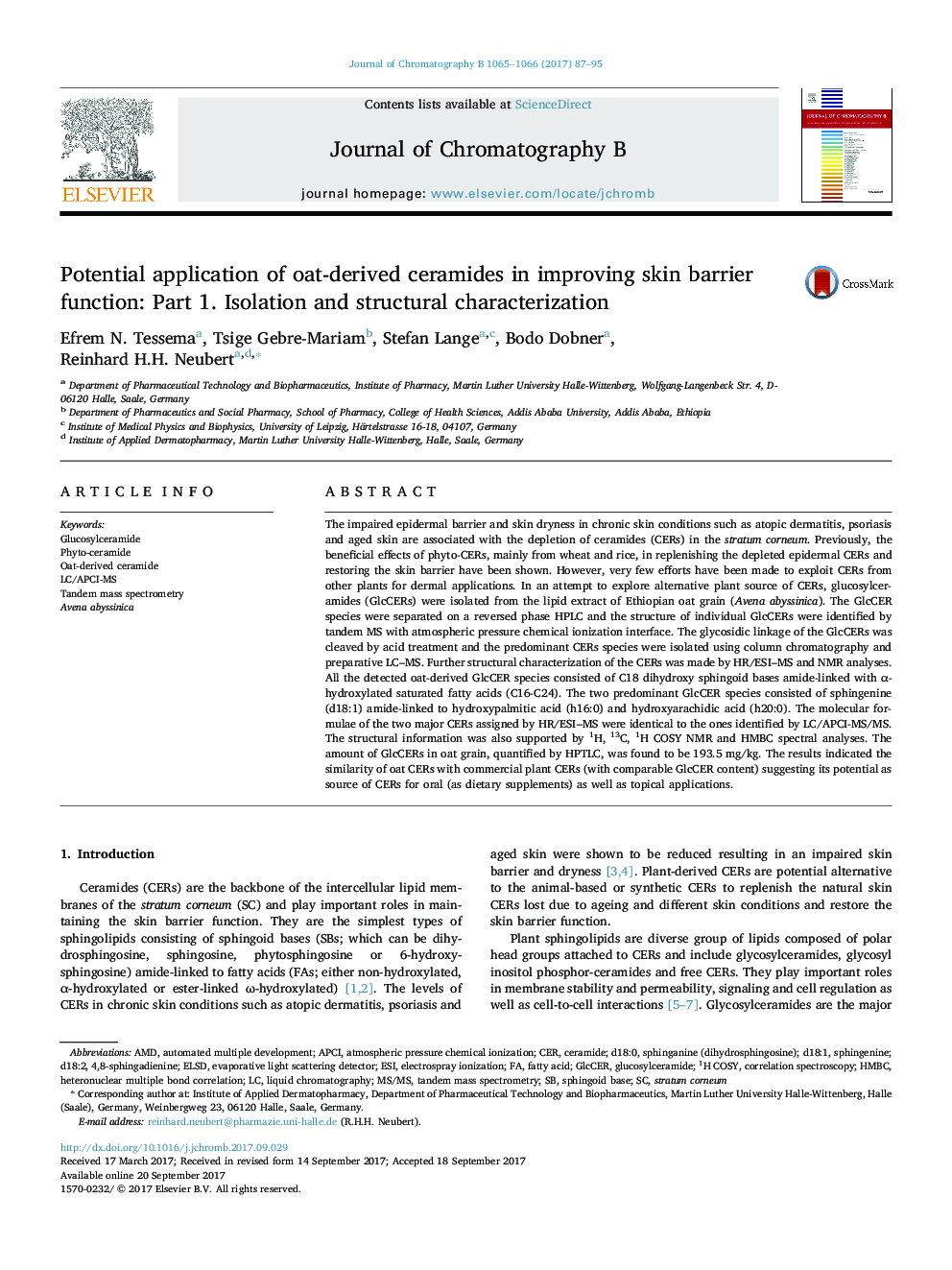| کد مقاله | کد نشریه | سال انتشار | مقاله انگلیسی | نسخه تمام متن |
|---|---|---|---|---|
| 5136091 | 1493999 | 2017 | 9 صفحه PDF | دانلود رایگان |

- A reversed phase LC/APCI-MS/MS method was used to separate and characterize the GlcCERs isolated from Ethiopian oat.
- Oat GlcCERs consisted of C18 dihydroxy sphingoid bases coupled with α-hydroxy fatty acids (C16-C24).
- NMR and HR-MS analyses of the predominant oat CERs supported the structural information obtained from LC-MS/MS analysis.
- Both qualitative and quantitative information suggest the potential of oat grain as a source of ceramides for dermal application.
The impaired epidermal barrier and skin dryness in chronic skin conditions such as atopic dermatitis, psoriasis and aged skin are associated with the depletion of ceramides (CERs) in the stratum corneum. Previously, the beneficial effects of phyto-CERs, mainly from wheat and rice, in replenishing the depleted epidermal CERs and restoring the skin barrier have been shown. However, very few efforts have been made to exploit CERs from other plants for dermal applications. In an attempt to explore alternative plant source of CERs, glucosylceramides (GlcCERs) were isolated from the lipid extract of Ethiopian oat grain (Avena abyssinica). The GlcCER species were separated on a reversed phase HPLC and the structure of individual GlcCERs were identified by tandem MS with atmospheric pressure chemical ionization interface. The glycosidic linkage of the GlcCERs was cleaved by acid treatment and the predominant CERs species were isolated using column chromatography and preparative LC-MS. Further structural characterization of the CERs was made by HR/ESI-MS and NMR analyses. All the detected oat-derived GlcCER species consisted of C18 dihydroxy sphingoid bases amide-linked with α-hydroxylated saturated fatty acids (C16-C24). The two predominant GlcCER species consisted of sphingenine (d18:1) amide-linked to hydroxypalmitic acid (h16:0) and hydroxyarachidic acid (h20:0). The molecular formulae of the two major CERs assigned by HR/ESI-MS were identical to the ones identified by LC/APCI-MS/MS. The structural information was also supported by 1H, 13C, 1H COSY NMR and HMBC spectral analyses. The amount of GlcCERs in oat grain, quantified by HPTLC, was found to be 193.5 mg/kg. The results indicated the similarity of oat CERs with commercial plant CERs (with comparable GlcCER content) suggesting its potential as source of CERs for oral (as dietary supplements) as well as topical applications.
Journal: Journal of Chromatography B - Volumes 1065â1066, 15 October 2017, Pages 87-95